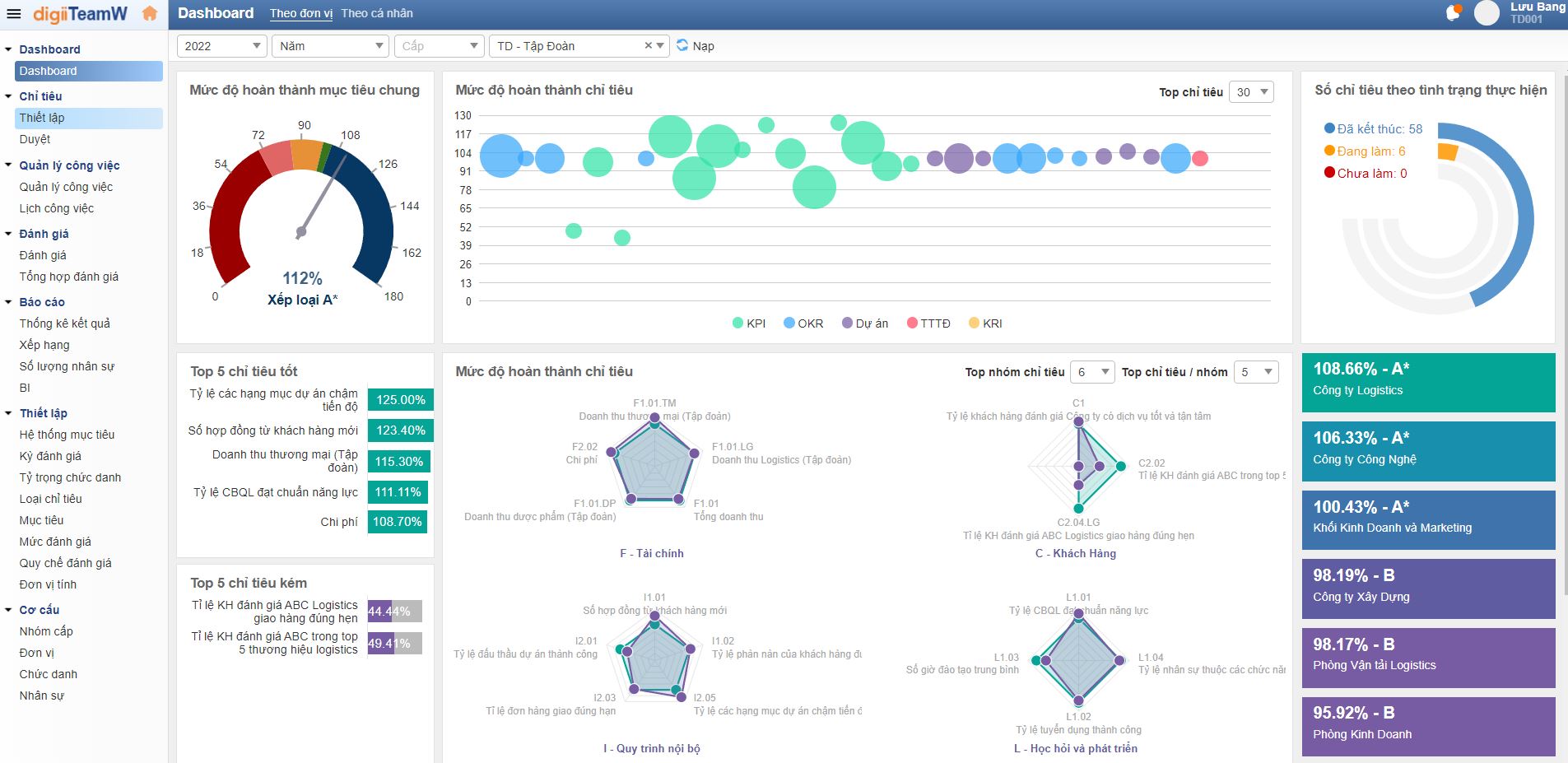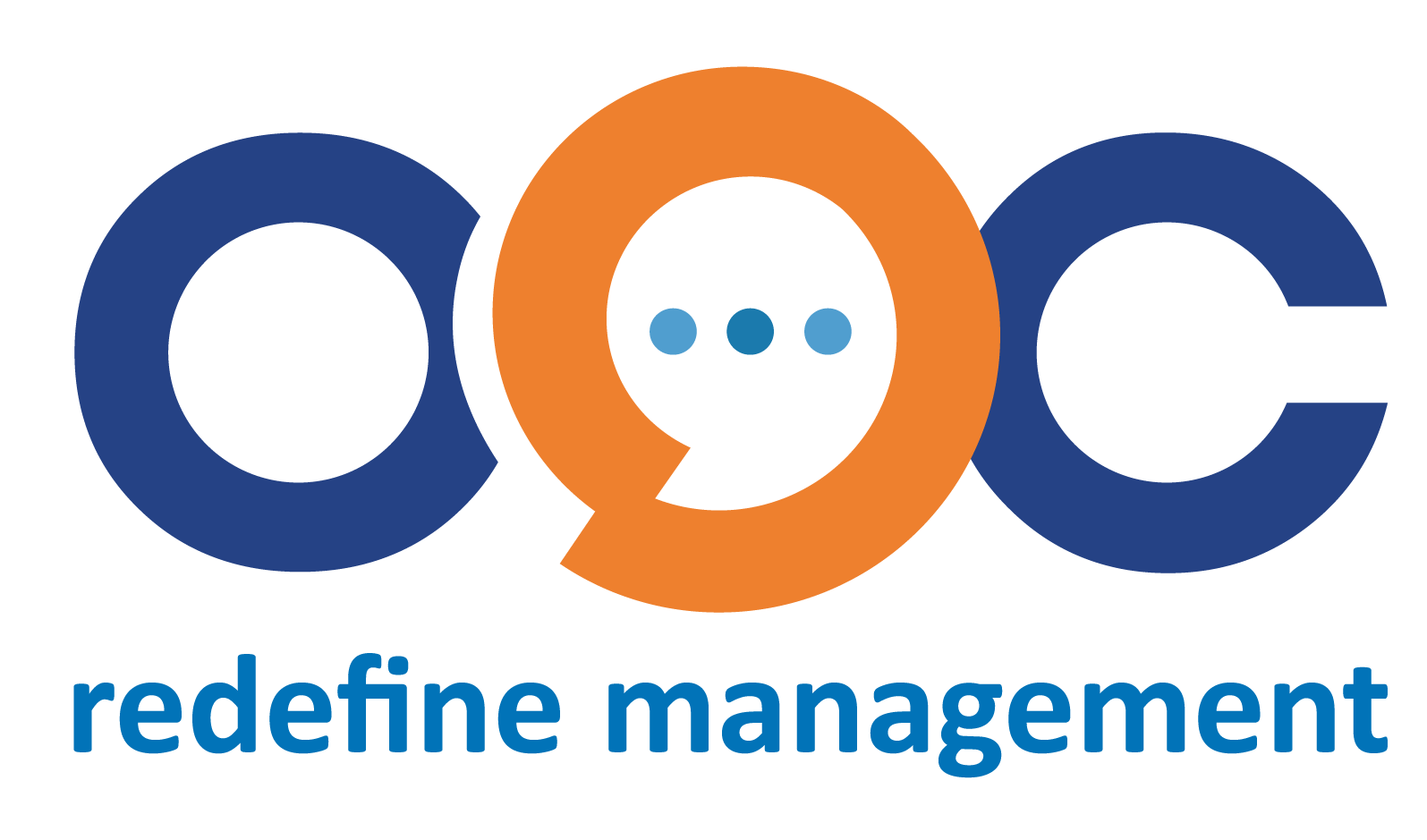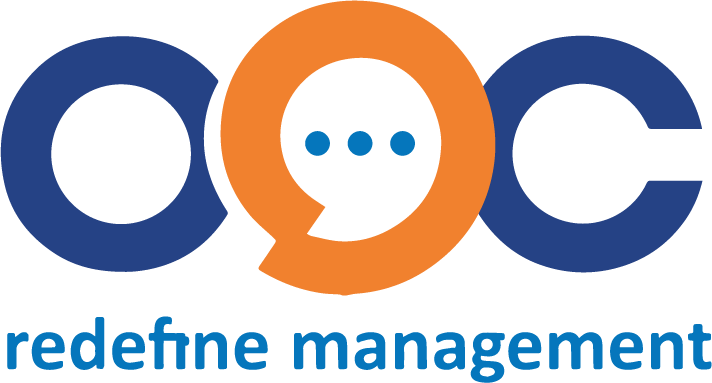
KPI (Key Performance Indicator) is a measurable value that demonstrates how effectively an individual, team, or organization is achieving key business objectives. Organizations use KPIs to evaluate their success at reaching targets. These indicators are often set as part of strategic planning and performance management processes. KPI software plays a crucial role in both data collection and the monitoring and reporting of KPIs. It helps automate, streamline, and centralize the management of performance metrics, allowing businesses to effectively track progress, make data-driven decisions, and improve operational efficiency.
What is KPI?
KPI (Key Performance Indicator) is a measurable value that demonstrates how effectively an individual, team, or organization is achieving key business objectives. Organizations use KPIs to evaluate their success at reaching targets. These indicators are often set as part of strategic planning and performance management processes.
Types of KPIs:
- Quantitative KPIs: Metrics that are expressed in numbers (e.g., revenue growth, number of new customers).
- Qualitative KPIs: Metrics that are based on subjective judgments (e.g., customer satisfaction).
- Lagging KPIs: Measure the outcomes or results of past efforts (e.g., sales revenue).
- Leading KPIs: Predict future performance (e.g., number of qualified leads).
Common Examples:
- Financial KPIs: Revenue, profit margins, return on investment (ROI).
- Operational KPIs: Efficiency of processes, production cycle times.
- Customer KPIs: Customer satisfaction (CSAT), Net Promoter Score (NPS).
- Employee KPIs: Employee engagement, training hours per employee.
KPIs help businesses track progress toward goals, adjust strategies, and improve performance. They should be specific, measurable, achievable, relevant, and time-bound (SMART).
Roles of KPI in business management
- Performance Tracking: KPIs provide a clear, measurable way to track the performance of teams, departments, and the entire organization.
- Strategic Alignment: They ensure that business activities are aligned with the company’s strategic objectives, helping teams focus on what matters most.
- Decision Making: KPIs offer data-driven insights that help leaders make informed decisions and adjust strategies or operations to meet business goals.
- Goal Setting: They help define realistic goals for employees and teams by setting clear, measurable targets.
- Accountability: KPIs clarify expectations and hold individuals and teams accountable for their contributions to the company’s success.
- Employee Motivation: Setting and achieving KPIs can boost morale by giving employees clear goals and a sense of accomplishment when targets are met.
- Resource Allocation: KPIs identify areas of success and those needing improvement, allowing managers to allocate resources more effectively.
- Continuous Improvement: Monitoring KPIs encourages businesses to consistently assess their performance, identify areas of improvement, and refine processes.
- Customer Satisfaction: Tracking KPIs related to customer feedback and service helps ensure that customer needs and expectations are being met.
- Risk Management: KPIs highlight risks or underperformance areas, enabling proactive responses to potential issues before they escalate.
Process to develop and deploy KPI system in business
The process to develop and deploy a KPI system in business involves several key steps:
- Identify Business Goals: Begin by understanding the company’s strategic objectives. Clearly define what the business wants to achieve in the short and long term.
- Determine Critical Success Factors (CSFs): Identify the key areas that will ensure the business meets its goals. These factors will help focus the KPIs on the most important aspects of the business.
- Choose Relevant KPIs: Select KPIs that directly align with the business goals and CSFs. Ensure that each KPI is SMART (Specific, Measurable, Achievable, Relevant, Time-bound).
- Engage Stakeholders: Involve key stakeholders, including leadership and department heads, to ensure buy-in and that KPIs reflect the priorities of different parts of the business.
- Define Measurement Methods: Establish how each KPI will be measured. Decide on the data sources, frequency of measurement, and any tools or systems that will be used for tracking.
- Set KPI Targets: Define the desired performance level or target for each KPI. These targets should be realistic but challenging, driving improvement.
- Implement Data Collection Tools: Deploy the necessary technology, software, or processes for capturing the data needed to measure each KPI. Ensure the system is user-friendly and integrates with other business tools if necessary.
- Train Employees: Provide training to employees on how KPIs will be measured and used. Ensure they understand their role in contributing to KPI success and how their performance will be evaluated.
- Monitor and Report: Regularly monitor KPI performance, generating reports that provide insights into whether targets are being met. Share these reports with relevant stakeholders to track progress.
- Review and Adjust: Periodically review the KPI system to ensure it remains relevant as business conditions evolve. Adjust KPIs, targets, or measurement methods as needed to stay aligned with changing goals and market conditions.
- Incorporate Feedback: Gather feedback from employees and managers on how well the KPI system is working. Use this feedback to improve the system and ensure it continues to drive the right behaviors and outcomes.
- Ensure Accountability: Assign clear ownership for each KPI, ensuring that someone is responsible for monitoring progress and making improvements if targets are not met.
Methods of colleting data and mornitoring KPIs
There are several methods for collecting data and monitoring KPIs, depending on the type of KPI and the tools available. These methods ensure that the data used to track KPIs is accurate, timely, and actionable.
Methods of Collecting Data for KPIs:
- Manual Data Entry: Employees manually input data into spreadsheets or business software. This method is simple but can be time-consuming and prone to errors if not properly managed.
- Automated Data Collection: Use software tools or systems that automatically gather data from different sources (e.g., sales systems, CRM tools, ERP systems). This reduces human error and speeds up data collection.
- Surveys and Questionnaires: Collect data directly from customers, employees, or other stakeholders through surveys or feedback forms. This method is common for KPIs related to customer satisfaction, employee engagement, or service quality.
- Website Analytics Tools: Tools like Google Analytics or heatmaps provide data on user behavior, traffic, and engagement on websites. This method is useful for tracking KPIs related to marketing or online sales performance.
- Sensor or IoT Devices: In industries such as manufacturing or logistics, sensors or IoT (Internet of Things) devices can provide real-time data on production performance, machinery usage, or environmental conditions.
- Database Queries: For businesses with large datasets, querying databases directly allows for efficient data extraction and analysis. Tools like SQL can pull specific metrics from internal systems to track KPI performance.
- Financial Reports: Use financial statements and reports (e.g., profit and loss statements, balance sheets) for KPIs related to financial performance, such as revenue growth or cost reduction.
- CRM and HR Software: Systems like Customer Relationship Management (CRM) and Human Resources Management Systems (HRMS) collect data related to sales, customer interactions, and employee performance.
Methods of Monitoring KPIs:
- Dashboard Software: Real-time KPI dashboards allow users to visualize data in an easy-to-understand format. These dashboards can pull data from multiple systems and present it in charts, graphs, and indicators for quick decision-making (e.g., Power BI, Tableau).
- Regular Reports: Generate periodic reports (daily, weekly, monthly) that summarize KPI performance. These reports are often distributed to management and teams to review progress and make adjustments as needed.
- Alerts and Notifications: Set up automatic alerts when KPIs reach certain thresholds (e.g., if sales drop below a set point). This ensures that immediate action can be taken when issues arise.
- Scorecards: Use balanced scorecards to provide a holistic view of performance across different areas of the business. Scorecards typically include financial, operational, customer, and employee-related KPIs.
- Benchmarking: Compare KPI data with industry standards or competitors to assess how well the business is performing in relation to the market.
- Periodic Reviews and Meetings: Hold regular KPI review meetings with stakeholders and teams. These meetings focus on analyzing data, identifying trends, and planning for improvements.
- Mobile Apps: Use mobile apps that allow managers and employees to track KPIs on the go. This ensures that key metrics are always accessible, improving responsiveness to changes in performance.
- Cloud-based Solutions: Many cloud-based KPI tracking tools integrate with other business systems and provide flexible access to KPI data from any device, improving collaboration and real-time monitoring.
- Audits and Evaluations: Periodically audit the data collection and KPI monitoring processes to ensure accuracy and efficiency. This ensures that the right data is being tracked and that any errors are corrected promptly.
Role of KPI software in KPI data collection, monitoring and reporting of KPIs
KPI software plays a crucial role in both data collection and the monitoring and reporting of KPIs. It helps automate, streamline, and centralize the management of performance metrics, allowing businesses to effectively track progress, make data-driven decisions, and improve operational efficiency.
Role of KPI Software in Data Collection:
- Automation of Data Collection: KPI software automates the process of gathering data from multiple sources, such as CRM, ERP, HRM, or financial systems. This reduces manual entry, minimizes errors, and ensures that data is up-to-date and accurate.
- Integration with Other Systems: Many KPI software solutions integrate with existing business tools (e.g., accounting software, sales platforms, project management tools) to pull data directly. This seamless integration enables real-time data collection without additional manual effort.
- Real-Time Data Access: KPI software can collect data in real-time, ensuring that key performance indicators are always up-to-date. This allows managers to monitor ongoing performance and react to issues immediately.
- Data Centralization: It consolidates data from various departments or sources into one centralized platform, making it easier for stakeholders to access and review key metrics. This eliminates the need for multiple tools or spreadsheets and provides a single source of truth.
- Customizable Data Inputs: Users can define what data needs to be collected and from which sources. KPI software offers flexibility in terms of what metrics are being tracked, which data streams are collected, and how frequently.
Role of KPI Software in Monitoring and Reporting:
- Real-Time Dashboards: KPI software provides interactive, real-time dashboards where users can visually track performance through graphs, charts, and performance gauges. These dashboards offer at-a-glance insights and help identify trends and outliers quickly.
- Customizable Reports: It allows for the creation of custom reports tailored to specific business needs. Reports can be generated on-demand or scheduled periodically (daily, weekly, monthly), ensuring stakeholders receive timely updates on KPI performance.
- Automated Alerts and Notifications: The software can trigger alerts or notifications when a KPI exceeds a predefined threshold or target. This allows for quick action when performance is off-track, preventing minor issues from becoming major problems.
- Historical Data Analysis: KPI software allows users to track KPI performance over time, offering the ability to compare current performance with historical data. This helps in spotting long-term trends, seasonality, or patterns that can inform strategic decisions.
- Benchmarking and Goal Setting: With the software, businesses can compare their current KPIs against industry benchmarks or internal goals. This feature helps managers assess performance relative to the competition or to their own past performance.
- Data Security and Accessibility: KPI software is often cloud-based, ensuring that data is accessible from anywhere while maintaining strict security measures. This improves collaboration across teams and departments without compromising sensitive information.
- Mobile Access: Many KPI software platforms have mobile apps, enabling managers and employees to monitor KPIs remotely. This facilitates real-time tracking and decision-making even when users are not in the office.
- Collaboration and Sharing: The software allows easy sharing of dashboards, reports, and insights with team members, executives, or external stakeholders. This fosters collaboration and transparency across the organization.
- Role-Based Access Control: KPI software typically offers user-level access control, ensuring that sensitive data is only accessible to authorized individuals. This helps in maintaining data integrity and ensuring that the right people are monitoring the relevant KPIs.
- Custom KPI Monitoring: KPI software allows businesses to create and monitor custom KPIs specific to their industry, department, or business goals. This flexibility ensures that performance metrics are aligned with business priorities.
In essence, KPI software transforms the way businesses collect, monitor, and report on performance, offering automated, real-time solutions that are critical for effective decision-making and performance management.
Best KPI softwares for KPI data collection, monitoring, report and assessment
Here are some of the best KPI software solutions for data collection, monitoring, reporting, and assessment.
- Power BI: A Microsoft solution that provides real-time dashboards, customizable reports, and seamless integration with various data systems. It enables businesses to monitor KPIs, analyze trends, and generate data-driven insights for better decision-making. Microsoft Power BI
- Tableau: A powerful data visualization and business intelligence tool that allows users to create interactive dashboards, track KPIs in real-time, and generate detailed reports with ease. Tableau integrates with various data sources for efficient data collection. Tableau
- digiiTeamW KPI Software: Specializes in KPI management for businesses. It allows the creation of custom KPIs, supports multi-level approval of targets and results, enables bulk KPI creation for faster setup, and allows evidence-based evaluation with audit trails.
- Klipfolio: A cloud-based platform that helps track and monitor KPIs in real-time. It provides customizable dashboards, integrates with a wide range of data sources, and allows users to build reports and set up automated alerts for KPI management.
- Geckoboard: Specializes in creating real-time KPI dashboards, making it easy to monitor performance metrics. It integrates with various data sources, is simple to set up, and provides visual insights that are easy to share across teams.
- Sisense: A business intelligence platform that allows companies to collect, visualize, and monitor KPIs across various data streams. It provides powerful data integration and reporting tools that make KPI tracking more effective.
- ClearPoint Strategy: A comprehensive solution for KPI tracking, reporting, and strategy management. It supports goal-setting, performance reviews, and provides customizable dashboards and reports, making it ideal for strategic KPI assessment.
- Domo: A robust cloud-based business intelligence platform that helps companies visualize data and track KPIs in real-time. Domo offers real-time dashboards, automated data collection, and strong collaboration tools for better decision-making.
- Qlik Sense: A business intelligence tool that helps companies analyze data and monitor KPIs. It offers interactive dashboards, data visualization features, and powerful analytics to help track and report on performance metrics.
- Cyfe: An all-in-one business dashboard platform that tracks multiple KPIs across different departments. It integrates with various data sources, offers real-time monitoring, and provides custom reports for performance tracking.
- These tools help businesses automate and optimize their KPI management processes, ensuring that performance metrics are accurately tracked, monitored, and assessed for continuous improvement.

